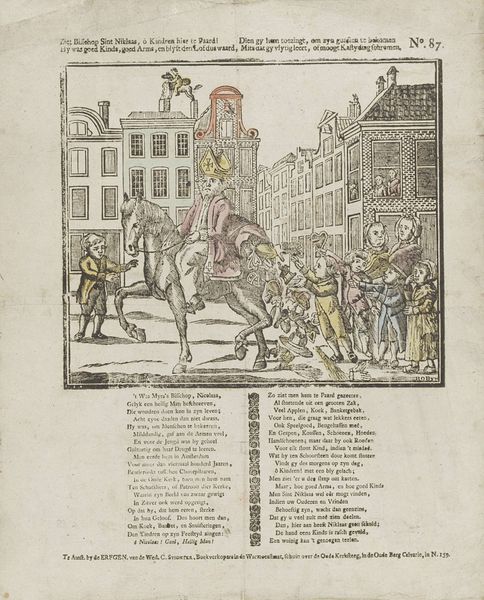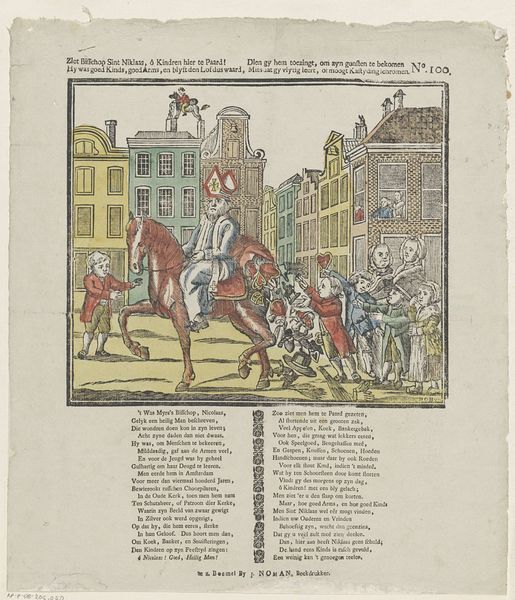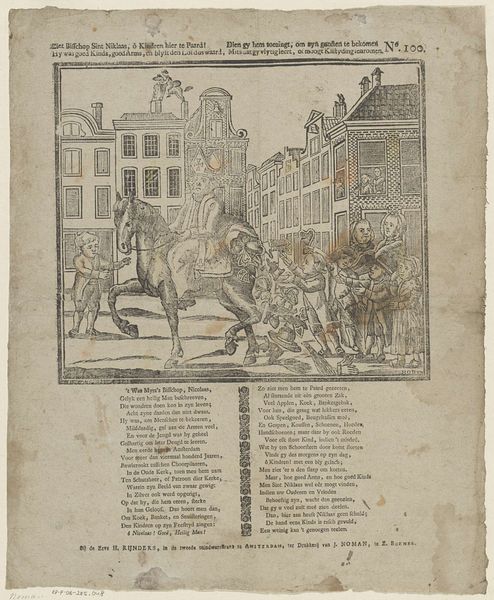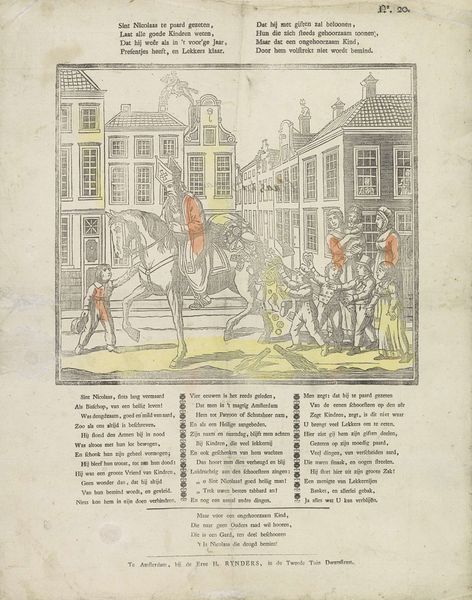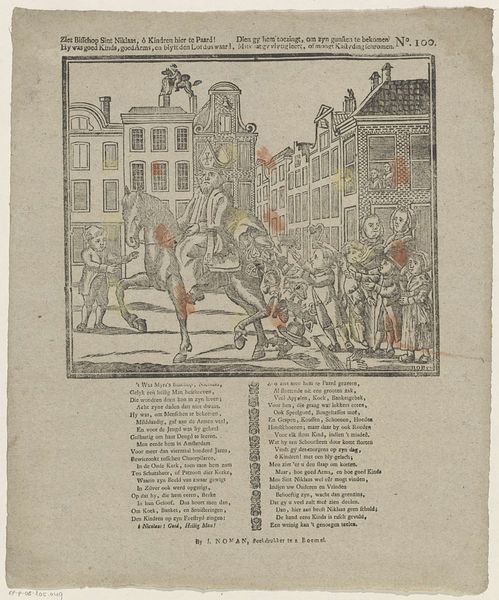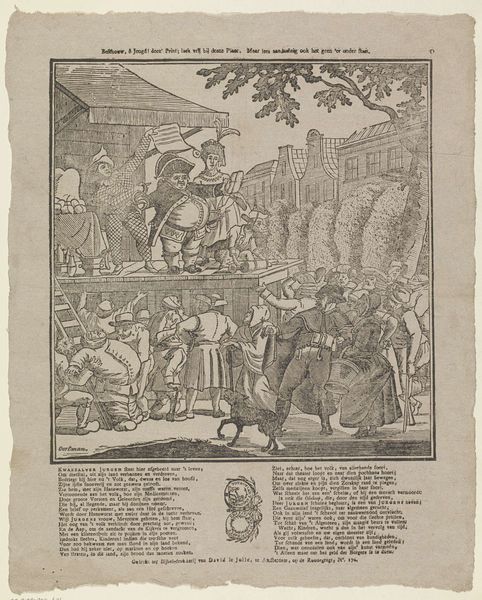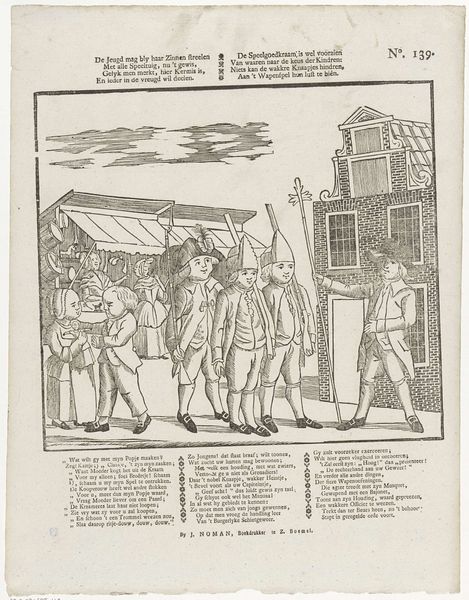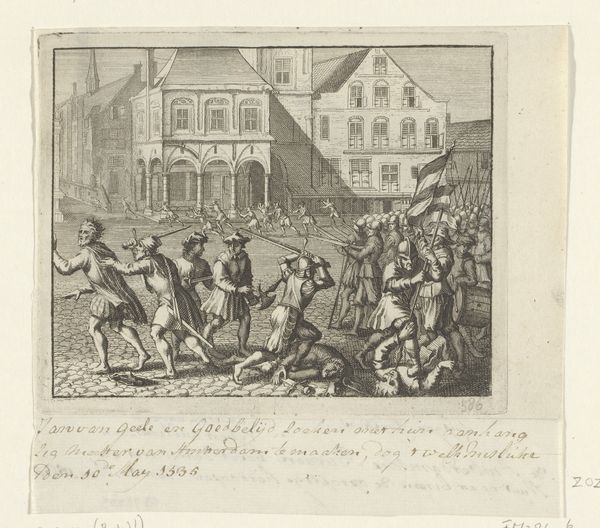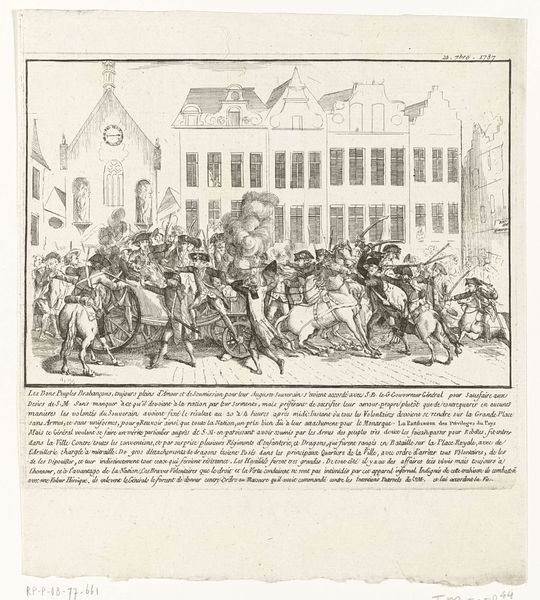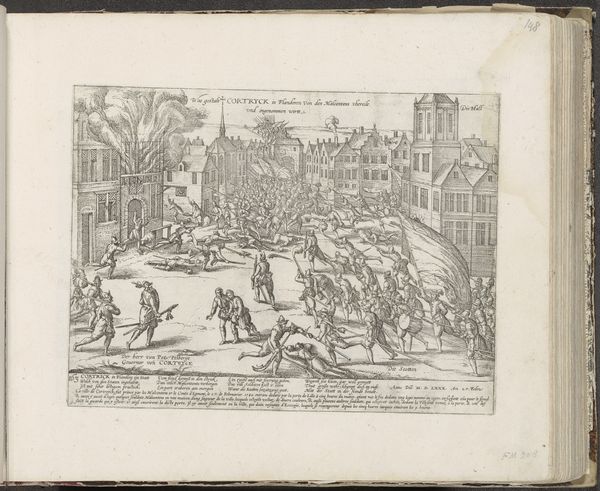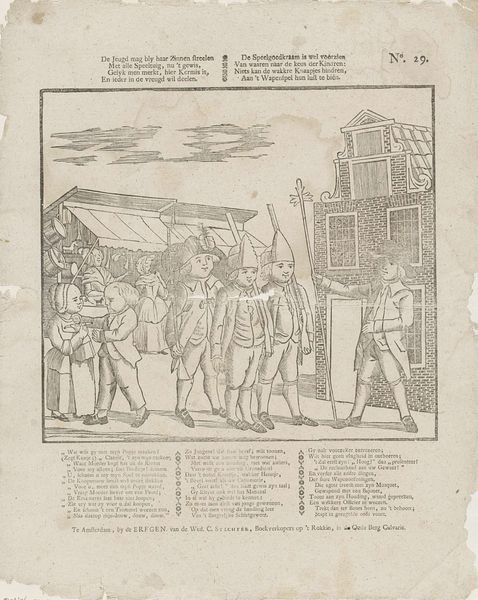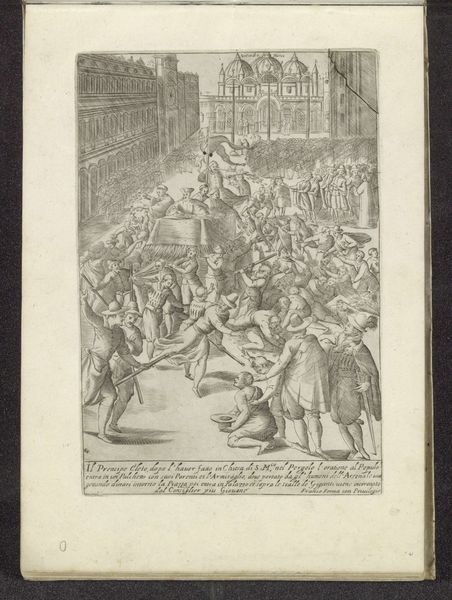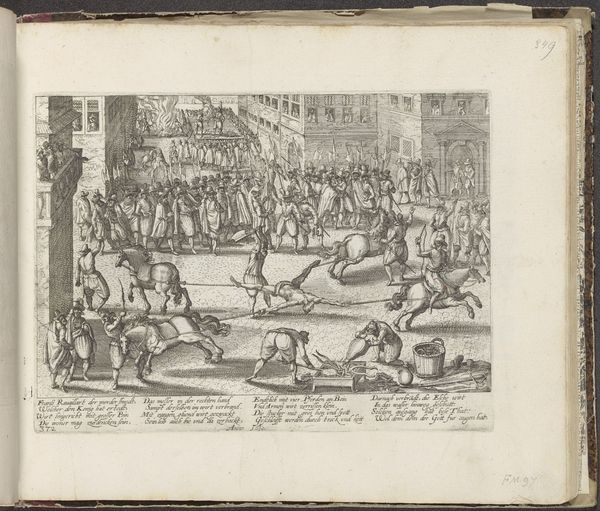
print, engraving
#
comic strip sketch
#
narrative-art
# print
#
ukiyo-e
#
folk-art
#
genre-painting
#
history-painting
#
cartoon carciture
#
engraving
Dimensions: height 415 mm, width 327 mm
Copyright: Rijks Museum: Open Domain
Editor: This is "The Arrival of St. Nicholas," an engraving by Erve H. Rynders, circa 1840, housed in the Rijksmuseum. The scene is bustling with children, and St. Nicholas, or Sinterklaas as he's known in the Netherlands, is arriving on horseback. It strikes me as both festive and maybe a little chaotic! What historical contexts shaped the creation of this image? Curator: That's a great initial observation. It's crucial to consider this engraving within the context of 19th-century Dutch society and the evolving traditions surrounding Sinterklaas. While seemingly a harmless children's celebration, it also subtly reinforces societal hierarchies and expectations. Consider the figure of Black Peter or Zwarte Piet. What social anxieties do you think the image attempts to reconcile or perhaps even exploit? Editor: I see what you mean about societal hierarchies; the children look up to St. Nicholas in awe, but you’re right, I didn't initially connect it to racial representation. It's troubling how Black Peter is portrayed in this print—so subservient and othered. It makes me think about the power dynamics inherent in these types of celebrations. Curator: Exactly. We have to recognize how these seemingly innocent folk traditions can perpetuate harmful stereotypes and reflect broader issues of colonialism and power. Look at the building facades: could they suggest the exclusion and wealth disparities inherent in the society Rynders was critiquing – or embracing? Editor: The buildings could signal the separation between the wealthy who profit and those marginalized. Examining historical art requires us to think beyond the surface to unveil these intricate layers. Thank you for making this a clear connection for me. Curator: And you, for bringing fresh eyes and these essential questions. Our job as observers is to constantly re-evaluate and understand the ongoing cultural impact of historical visual media.
Comments
rijksmuseum about 2 years ago
⋮
In this print Saint Nicholas appears in full regalia, with a long white beard, miter and cassock, but still without a servant. The saint is shown here in his capacity as the generous friend to children. That he also punishes naughty children is evident only from the two whisks in the foreground. The accompanying verses also cleverly point out that whisks are dispensed to disobedient children.
Join the conversation
Join millions of artists and users on Artera today and experience the ultimate creative platform.
